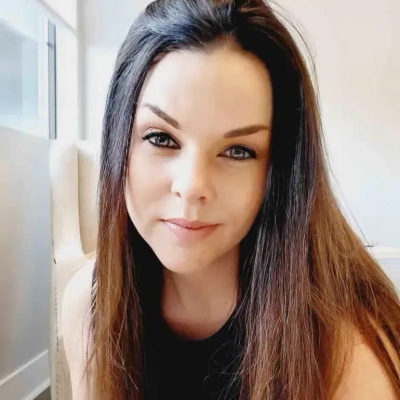25 Cash Flow Forecasting Methods that Deliver Accuracy
Accurate cash flow forecasting is crucial for business success, yet many organizations struggle to achieve reliable projections. This article explores innovative methods that can significantly improve the accuracy of cash flow predictions. Drawing on insights from industry experts, these techniques offer practical solutions for businesses across various sectors.
- Scenario-Based Forecasting Enhances Cash Flow Accuracy
- Monte Carlo Simulations Improve Rental Cash Projections
- Weekly Updates Keep Real Estate Forecasts Realistic
- Rolling 13-Week Forecast Adapts to New Data
- Demand Cycles Drive Gold Industry Cash Projections
- ERP Data Informs SaaS Implementation Cash Forecasts
- Regression Analysis Links Deal Velocity to Cash Flow
- Conservative Three-Tier System Manages Trade Volatility
- Deal Stage Tracking Forecasts Property Flip Cash Flow
- Dynamic Model Connects Behavioral Metrics to Projections
- Tiered Model Separates Subscription from Project Revenue
- Hybrid Model Applies Probability to Payment Patterns
- Local Data Improves Real Estate Cash Flow Forecasts
- Cohort Analysis Guides Marketing Channel Profitability
- Machine Learning Captures Complex Business Patterns
- Appointment Trends Stabilize Practice Cash Projections
- Real-Time Data Integration Enhances Payment Predictability
- Leading Indicators Anticipate Agency Revenue Fluctuations
- Historical Patterns Predict Global Motorcycle Rental Demand
- Project-Based Forecasting Maps Multiple Exit Scenarios
- Cost-First Approach Anchors Forecasts in Reality
- Predictability Tiers Simplify Real Estate Cash Projections
- Experimental Budget Tests New Initiative Impact
- Cohort-Based Revenue Recognition Tracks Tuition Patterns
- Probabilistic Models Plan for Multiple Cash Futures
Scenario-Based Forecasting Enhances Cash Flow Accuracy
As the Founder and Managing Consultant at Spectup, I've always emphasized that cash flow forecasting is as much about anticipating behavior as it is about numbers. One method that has consistently proven accurate is scenario-based forecasting. Rather than relying solely on historical trends, we model multiple potential outcomes—best case, expected, and worst case—and adjust for both predictable and unpredictable variables. For example, I worked with a growth-stage startup preparing for fundraising where revenue streams were seasonal and customer payments irregular. Using scenario models allowed us to understand the full range of potential cash positions.
We incorporated variables like delayed payments, changing subscription volumes, and unexpected operational costs. One practice that added significant accuracy was linking cash flow assumptions directly to operational KPIs, such as customer acquisition rates and churn. This made projections dynamic rather than static. I remember walking through these scenarios with the founders and realizing that the exercise itself revealed hidden risks they hadn't anticipated, such as supplier payment cycles that could temporarily constrain liquidity.
Another element was stress testing. We would simulate sudden shocks like late investor disbursements or slower-than-expected sales and evaluate the company's buffer capacity. By doing this, we didn't just forecast numbers; we created actionable contingency plans. At Spectup, we often advise startups that forecasting is not a one-off exercise. Continuous updating, monitoring, and linking forecasts to tangible operational metrics allows leaders to make proactive decisions rather than reactive ones. The combination of scenario modeling, variable adjustment, and stress testing provides clarity in uncertainty and equips teams with confidence when navigating financial challenges, particularly in investor-ready environments.

Monte Carlo Simulations Improve Rental Cash Projections
In managing rental portfolios, I've found Monte Carlo simulations surprisingly useful for projecting cash flow. The real headache with rental forecasting is factoring in vacancies, unexpected repairs, and fluctuating rents all at once. I build a probability distribution for each variable and run thousands of iterations to see how outcomes might spread. Last year, this method alerted me that rising maintenance costs could offset rent growth, helping me renegotiate insurance before margins shrank. My take is: don't settle for a single prediction—plan for probability, not perfection.

Weekly Updates Keep Real Estate Forecasts Realistic
In real estate, I rely on a zero-based monthly forecast paired with rolling updates as projects evolve. Every Friday, I compare actual inflows from closings or flips with what I expected, then adjust for delays in contractor timelines or buyer financing. I'll put it this way: this method turned my biggest cash flow headaches—like unexpected repair overages—into a non-event because they were already buffered into next month's plan. If you track weekly and revise monthly, your forecasts stay realistic even when deals move unexpectedly.
Rolling 13-Week Forecast Adapts to New Data
One method I've found particularly accurate for forecasting cash flow is building a rolling 13-week forecast that's updated weekly. Unlike static annual or quarterly forecasts, the rolling model keeps you close to reality because it's constantly adjusting based on new data. It forces discipline around tracking inflows and outflows in short intervals, which makes trends and risks visible earlier.
What makes it powerful is that it blends precision with agility. For near-term visibility, I rely on actual invoices, contract terms, and recurring expenses. That part is less about guesswork and more about staying meticulous with data inputs. For the later weeks in the cycle, I introduce scenario modeling to account for uncertainties—what happens if receivables slip by 10 days, if a large order doesn't close, or if expenses rise faster than expected? By stress-testing assumptions across best, base, and worst-case scenarios, you get a realistic range rather than a single, fragile number.
This approach also changes how teams behave. When leaders know there's a weekly rhythm to reviewing and updating forecasts, they're quicker to flag potential risks or opportunities. That cultural shift—treating cash flow as a living metric instead of a static report—creates better decision-making across the business. For example, I've seen rolling forecasts help identify when to slow discretionary spending weeks before a crunch would have otherwise surfaced.
Uncertainty will always be part of cash flow management, but the key is not to eliminate it—it's to design a system that adapts to it. A rolling forecast gives you that flexibility while still being grounded in near-term accuracy.
For CFOs and business owners, my advice is this: don't chase perfection in forecasting. Chase responsiveness. The organizations that navigate uncertainty best aren't the ones with flawless spreadsheets—they're the ones with processes that keep them close to the truth and ready to pivot. That's what a disciplined rolling forecast delivers.
Demand Cycles Drive Gold Industry Cash Projections
One of the most effective methods I use to forecast cash flow is building projections around customer demand cycles rather than relying solely on historical financial statements. In the gold industry, timing is everything. Prices move quickly, and demand often responds just as fast to shifts in global confidence, currency fluctuations, or geopolitical events. By tying cash flow forecasts to these broader market signals, I get a clearer picture of when inflows and outflows will peak. I supplement that with constant dialogue across our trading desks and client network, which gives me a sense of sentiment before it shows up in the numbers.
Uncertainty is part of the business, so I never assume a single forecast is the answer. I model scenarios: a conservative case, a probable case, and an aggressive case. Each has its own assumptions about gold prices, client activity, and operational needs. That way, when the unexpected happens—and it often does—we're not caught flat-footed. Having both an MBA and a JD has trained me to approach this process with a mix of financial discipline and legal foresight. The goal is not to predict perfectly but to stay prepared and adaptable, which ultimately protects our clients and our business.
ERP Data Informs SaaS Implementation Cash Forecasts
One forecasting method that has proven accurate for me is leveraging historical ERP implementation data to set a baseline, then stress-testing it with different cash flow scenarios. In my role as Managing Director at Threadgold Consulting, this approach continues to deliver solid results whenever projects vary by length or client payment terms. For example, we compare actual versus forecasted inflows across past SaaS implementations to refine new projections. When uncertainties arise, such as delayed approvals or scope shifts, I incorporate conservative assumptions and model a 15-20% payment delay buffer. It's not perfect, but these cautious adjustments have consistently helped us maintain a positive cash flow even during fluctuating project cycles.

Regression Analysis Links Deal Velocity to Cash Flow
I rely on regression analysis using historical data to forecast cash flow patterns based on deal velocity and onboarding timelines. On a day-to-day basis, addressing visibility issues almost always involves turning to data correlations, rather than just intuition. For example, when we noticed cash dips trailing slower onboarding cycles, we modeled that lag and built a predictive link into our forecast. I also maintain contingency reserves as a percentage of MRR, so if churn spikes or payments are delayed, we're covered. In unpredictable markets, it's less about perfection and more about quick recalibration based on leading indicators.

Conservative Three-Tier System Manages Trade Volatility
Forecasting cash flow for a trade business is all about managing volatility from insurance and the weather. The method that has proven particularly accurate for me is a simple, highly conservative approach: classifying all incoming money into three non-negotiable tiers.
The process is straightforward. I track all potential income in three columns:
1. Cash In Hand (Money already cleared the bank)
2. Money Coming Soon (Insurance check confirmed, 100% due, but not yet received)
3. Theoretical Money (New bids out)
The crucial part—how we account for variables and uncertainties—is simple: I only budget and spend money from Column 1. Money in Column 2 is set aside for future investments, like new equipment. By operating as if the money isn't real until it's physically in the bank, we eliminate the risk of a delayed check or a sudden weather event causing a financial panic.
The key lesson is that complexity creates risk. My advice to other business owners is to stop counting money that is still in someone else's bank account. Budget based only on cash in hand, because that highly conservative approach is the only accurate, safe way to manage your crew, your suppliers, and your profitability.
Deal Stage Tracking Forecasts Property Flip Cash Flow
I rely heavily on tracking deal stages and comparing them to past transaction timelines to forecast cash flow accurately. Lately, I've observed this approach working especially well when flipping or closing multiple properties simultaneously. For instance, if two homes under contract take an average of 25 days to close, I forecast incoming cash around that window and build a backup plan for 10-day swings in either direction. I also factor in renovation or repair costs that can extend timelines, adding variable expense cushions accordingly. This method helps me account for unexpected market slowdowns while keeping liquidity ready for new opportunities.

Dynamic Model Connects Behavioral Metrics to Projections
At Tutorbase, I use a dynamic cash flow model that combines recurring revenue projections with rolling three-month forecasts. I used to overestimate consistency in subscription renewals until I started adjusting forecasts weekly based on usage trends and client retention data. I also run best-case and stress-test scenarios to see how deferred payments or churn would impact liquidity. My tip: connect your forecasts directly to real-time behavioral metrics; it keeps projections grounded and flexible.

Tiered Model Separates Subscription from Project Revenue
As CEO at FATJOE, accuracy in forecasting cash flow is essential when running thousands of micro-transactions monthly. I've found a tiered model works best, separating predictable subscription revenue from one-time project spikes, then stress-testing each tier for seasonal dips in agency demand. When the market softened in Q2 last year, this breakout helped us adjust our ad budget early and maintain positive cash flow despite slowed orders.

Hybrid Model Applies Probability to Payment Patterns
I rely on a hybrid model that forecasts cash flow using historical monthly expenses and recurring client invoices weighted by timing patterns. At Medix Dental IT, we were skeptical of complex models until a few irregular collections one year made us rethink simplicity. Now, we apply probability adjustments for late payments and seasonal renewals, which keeps forecasts realistic. I also recommend adding a small contingency—roughly 5%—to mitigate cybersecurity contracts or compliance-related delays.
Local Data Improves Real Estate Cash Flow Forecasts
Since 2005, I've relied on adjusting cash flow forecasts using jurisdiction-specific data such as eviction timelines and average turnover periods. It dawned on me during a Columbus project that accounting for local legal delays made the difference between breaking even and profiting. Now, I build in buffers for holding costs and recheck assumptions monthly, especially when market conditions start shifting rapidly.
Cohort Analysis Guides Marketing Channel Profitability
At Magic Hour, our cash flow forecasting leans heavily on cohort analysis. We track user acquisition costs against lifetime value by channel to understand how each marketing effort contributes to recurring revenue. The tough part is accounting for fast-changing ad performance and churn, so we apply rolling three-month averages and scenario planning for uncertainty. During one launch phase, these projections helped us pivot away from underperforming channels before burn became a problem. I'd suggest founders treat forecasting as a living model—update it when reality shifts, not just quarterly.

Machine Learning Captures Complex Business Patterns
When it comes to forecasting cash flow, one of the most accurate and forward-looking approaches today revolves around using machine learning-based time series forecasting. The main idea is not just to extend historical trends but to create a model that actually learns how the business behaves over time. It captures factors like seasonality, spending cycles, growth phases, and even one-time fluctuations. Models such as Prophet or XGBoost are often considered effective because they can recognize these complex patterns in financial data.
The real strength of this approach lies in bringing in independent variables that drive the cash flow itself. Elements such as headcount planning, sales performance, operating expenses, or project schedules often have a direct influence on inflows and outflows. When these are integrated into the model, the forecasts reflect a much more realistic view of how the business operates rather than simply being based on static assumptions.
Managing uncertainty and variability is also a key part of the process. One common practice is to forecast at a more granular level, such as by product line, business unit, or region. This helps capture variations that would otherwise be lost in a single consolidated forecast. Back testing is another important step, where predictions are compared with past actual results to check how closely the model would have performed if it had been used before. This helps in continuously improving its accuracy.
It is also essential that the model is updated regularly, ideally every month, as new data becomes available. This keeps the forecast in tune with real-time business conditions. To measure how accurate the model is, metrics such as RMSE or Root Mean Square Error are used. In simple terms, it shows how close the predicted numbers are to the actual outcomes, where a smaller RMSE means the model is performing better.
This approach not only improves accuracy but also creates more efficiency and automation. Forecasts that used to take several manual steps can now be generated quickly and refined automatically. More importantly, it provides leadership with a dynamic and data-driven view of the organization's cash position, turning cash flow forecasting into a living process that evolves with the business rather than remaining a static exercise.

Appointment Trends Stabilize Practice Cash Projections
One method that has worked well for me as a counseling practice owner is forecasting based on appointment trends by day and practitioner workload. It's remarkable how stable monthly projections become once you incorporate realistic attendance patterns and seasonal fluctuations. When one therapist goes on leave or client cancellations increase, that data instantly feeds into the next month's projection. I'd recommend building small buffers for unexpected factors like staff turnover or technology expenses—it keeps financial stress from sneaking up unexpectedly.
Real-Time Data Integration Enhances Payment Predictability
At Lessn, we forecast cash flow by integrating real-time data from our customers' accounting platforms - like Xero and MYOB - with automated payment scheduling insights. This approach eliminates guesswork by basing projections on actual invoice due dates, recurring expenses, and payment patterns rather than manual estimates. Because payments can be made by credit card even when suppliers don't accept them, we also account for extended payment terms and interest-free periods, which improve cash flow predictability and accuracy.
To handle uncertainties and variables, we use dynamic forecasting that adjusts automatically as new transactions or payment behaviors occur. Instead of relying on static monthly reports, our system continuously updates cash flow positions to reflect changes in spending, supplier activity, and card billing cycles. This allows businesses to anticipate potential shortfalls or surpluses early, giving them the flexibility to optimize cash reserves, defer outflows, or capitalize on rewards - all with full transparency.

Leading Indicators Anticipate Agency Revenue Fluctuations
I've found that tracking leading indicators such as website traffic, qualified leads, and proposal conversion rates is surprisingly accurate for forecasting agency cash flow. In my role at YEAH! Local, this method consistently delivers solid results whenever campaigns fluctuate seasonally. For example, if organic traffic and leads spike mid-quarter, I can anticipate a bump in project revenue about 60-90 days later. On the expense side, I adjust for variable costs like contractor hours or new tools, which shift based on campaign volume. It's a fairly straightforward model, but it gives me enough clarity to prepare for both lean and growth periods without surprises.

Historical Patterns Predict Global Motorcycle Rental Demand
One method I use to forecast cash flow is to look at historical data and overlay fixed expenses to predict the patterns. Given that we have riders and local providers of motorcycles all around the world, I'm able to look at previous booking cycles across various cities and regions to predict future demand. For example, I've seen spikes in bookings on the coast during holiday weekends, as well as a rise in rentals in city centers during business travel seasons. When translated into real time by superimposing these historical patterns on top of future recurring costs such as platform maintenance and staff and partner payouts, the forecast will be based not on assumptions but consistently measurable data. This method has never failed me, and it gives me a solid place to start.
To account for the uncertainties, I build flexible assumptions, not hard numbers, in my calculations. I typically put in three scenarios: steady growth, moderate, and a sudden surge. For instance, when fuel prices moved significantly last year, I thought about how it might affect local rental pricing or customer demand. By stress-testing the cash flow against those variables, I could see how resilient our reserves were under various conditions. The biggest lesson I have learned is not to treat forecasts as static documents, but rather to consider them as changing according to circumstances. If demand changes because of weather, currency values, or travel restrictions, I'm not scrambling to respond, but I have a plan that allows the business to remain steady.
Project-Based Forecasting Maps Multiple Exit Scenarios
The most accurate method I use is project-based forecasting tied to each property's acquisition and resale timeline. For example, if I expect a house to close in 45 days, I model multiple exit scenarios: funding delays, price drops, or faster buyers to map possible outcomes. Maintaining a two-month operating reserve has been my best safeguard against those unpredictable turns.
Cost-First Approach Anchors Forecasts in Reality
Instead of starting with revenue projections, I start with fixed costs and work backward from what absolutely must be covered each month. Then I layer in variable expenses and only afterward estimate income based on current pipeline strength, not wishful thinking.
To handle uncertainty, I build three parallel forecasts: conservative, realistic, and aggressive. The conservative one runs the show — if we're cash-positive there, we're safe. It's not fancy, but it's accurate because it's anchored in cash behavior, not spreadsheet optimism.
That approach has saved me more than once from scaling too early or hiring based on overconfidence.

Predictability Tiers Simplify Real Estate Cash Projections
In real estate, forecasting cash flow can be challenging, but layering predictability tiers helps simplify the process. I break it down into base rent collections, rehab project income, and acquisitions, assigning different uncertainty margins: 5% for rentals, 20% for flips, and 30% for new deals. When the market experienced a lull last winter, those extra buffers kept our projections grounded and our investor updates on target.

Experimental Budget Tests New Initiative Impact
I find that analyzing historical cash-flow statements and projecting inflows 6-9 months ahead based on growth trends provides reliable forecasting results. To account for uncertainties, I maintain a separate experimental budget where new initiatives are tested on a smaller scale before full implementation. This approach allows us to measure the actual impact of variables and make data-driven adjustments to our projections before committing significant resources.

Cohort-Based Revenue Recognition Tracks Tuition Patterns
One forecasting method that's proven reliable for me is tracking cash flow through cohort-based revenue recognition. By mapping each student group from enrollment through payment realization, I can identify when tuition patterns shift seasonally or geographically. I've noticed that building lead-time buffers, especially for slower-paying regions, usually clears up short-term cash crunch risks pretty quickly.

Probabilistic Models Plan for Multiple Cash Futures
In my view, the most common pitfall in cash flow forecasting is chasing a single, 'perfect' number. My philosophy is to stop trying to predict the future and start planning for many possible futures.
One method I've found particularly accurate is to use probabilistic time-series models (for example, Bayesian structural time series or DeepAR) rather than just point forecasts. These models don't just predict a single number for each future day or week of cash flow — they output a full predictive distribution. That means instead of saying "next Friday's net cash will be $2.5M," the model tells me "there's a 70% chance it falls between $2.3M and $2.7M, but a 5% chance it dips below $2.1M."
To account for uncertainties and variables, I then:
1. Generate Monte Carlo scenarios from those distributions, so I can stress-test cash under many possible futures.
2. Model tail events explicitly (e.g., unusually large supplier payments or delayed receivables) using extreme value theory, so rare but costly events aren't ignored.
3. Feed those scenarios into an optimization with a CVaR (Conditional Value-at-Risk) constraint, which makes sure we minimize financing cost and keep liquidity risk under control, even in the worst cases.
This way, uncertainties aren't brushed aside — they're built directly into both the forecast and the financing plan. Ultimately, this transforms the treasury function from a reactive one, focused on daily liquidity, into a strategic partner that enables proactive, risk-aware capital allocation and builds genuine financial resilience.











